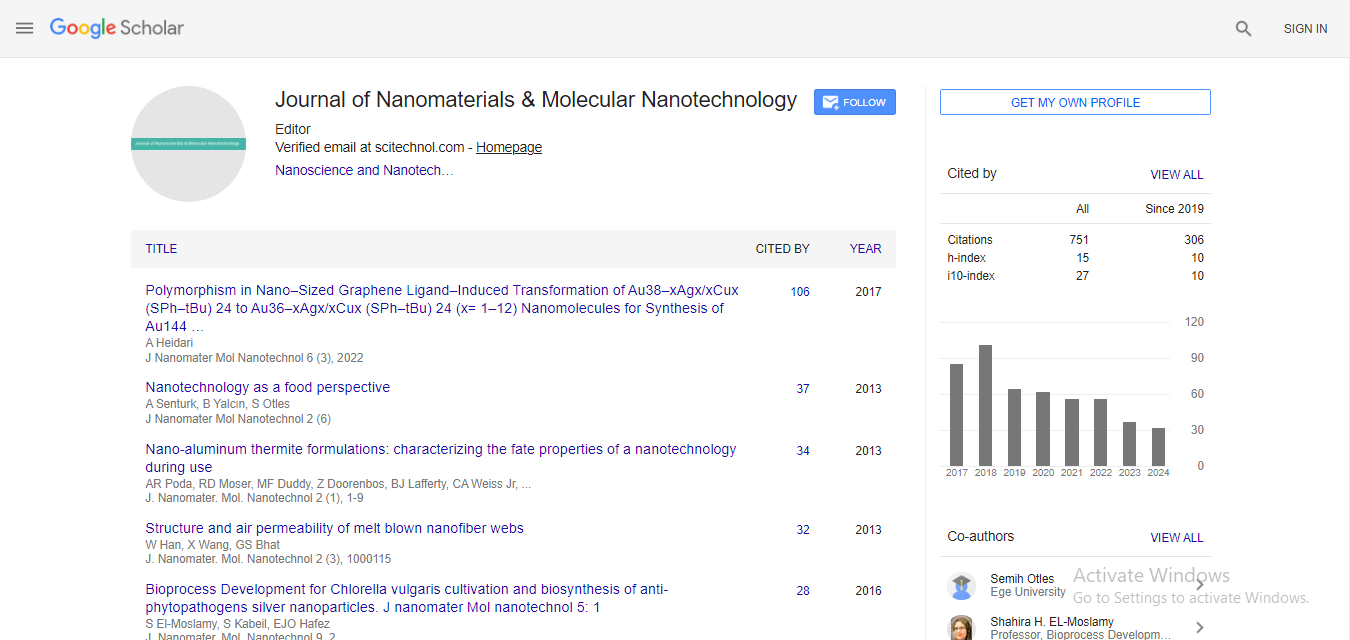The modification of einstein's dmr relation in quantum wire superlattices (qwsl) and study of subnikov dehas effect in parabolic semiconductors : simplified theory and suggestions for further experimental determination in biomaterials
Sudip Chatterjee
Regent Education and Research Foundation, India
: J Nanomater Mol Nanotechnol
Abstract
The semiconductor super lattices (SLS) and nano wires have found wide applications in many electronic device structures and bio devices such as photo detectors, light emitters, avalanche photo diodes, compensatory transistors, tunneling devices, genetic diodes etc. The most extensively studied SL is the one consisting of alternate layers of GaAs and Ga1-xAlxAs, owing to its fabrication. The GaAs layers form the quantum wells, quantum dots, quantum wires and the Ga1-xAlxAs layers form the potential barriers. We wish to note that, the afore mentioned SLS have been proposed with the assumption that the interfaces between the layers are sharply defined with zero thicknesses so as to be devoid of any interface effects. As the potential form changes from a well (barrier) to a barrier (well), an intermediate potential region exists for the electrons. Thus the influence of the finite thickness of the interface on the carrier dispersion law becomes very important since, the carrier energy spectrum governs all the transport properties. In this paper, we shall investigate the DMR for the most interesting case which occurs in QWSLs of graded interfaces and compare the same with that of the constituent materials by formulating the respective one dimensional electron dispersion laws. The above mentioned inversion layer(ILs) also produces the well studied Shubnikov de Has effect in different nano structured materials and have been found wide applications in the molecular and cell biology.
Biography
Sudip Chatterjee is presently working as an Associate Professor in the department of Basic Science at a premier Institute of India. He had received his Ph.D.degree on some electronic transport properties of nanomaterials from Jadavpur University, Kolkata in 2005 and he continued his post doctoral research at TuDelft, The Netherlands. Presently he is working in the field of characterization and synthesis of bio-nano materials since 2008 and he had carried number of projects as the principal investigator and co investigator under the sponsorship of some premier research institutes. He has published more than 35 papers in reputed international journals. He has worked as a Senior Lecturer in St Xavier’s College, Kolkata, also as an Assistant Professor at Sikkim Manipal Institute of Technology, Sikkim, India and also he has served as the Assistant Professor at the IFHE University, India.
 Spanish
Spanish  Chinese
Chinese  Russian
Russian  German
German  French
French  Japanese
Japanese  Portuguese
Portuguese  Hindi
Hindi 



